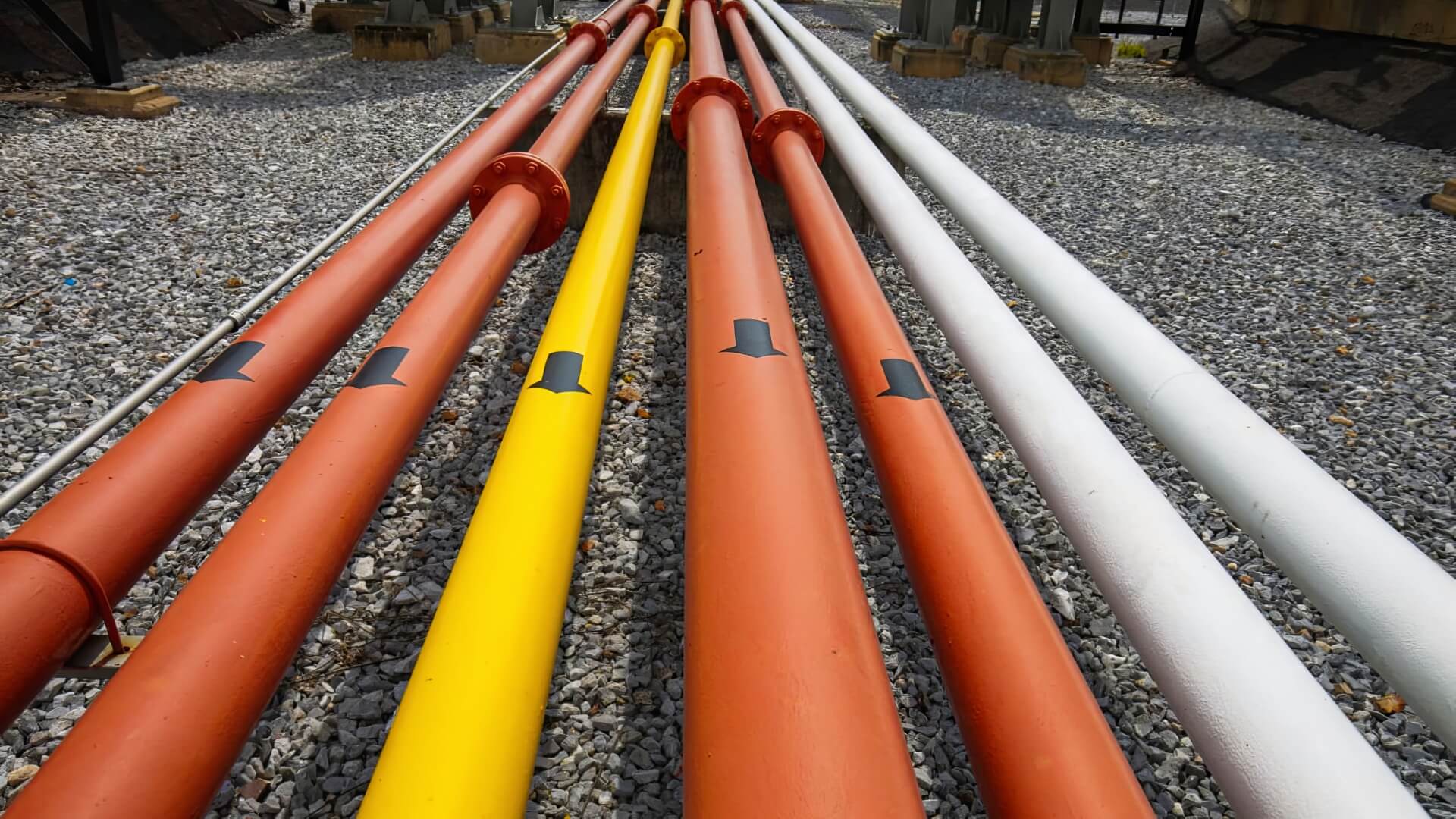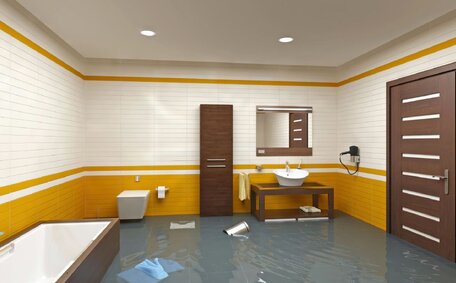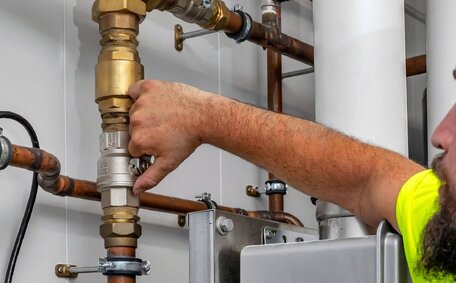Identifying the Source of the Leak
The initial step in addressing a leaking hot water system is to accurately identify the leak’s source.
Visually inspect the unit and surrounding areas for any water leak on the floor, wet patches on walls or ceilings, or dripping spots. Leaks may stem from the hot water tank, pressure relief valve, inlet or outlet pipes, or even a faulty drain valve.
Recognise that not every leak near your hot water system is due to the system; other pipes and fixtures may also be at fault. Check pipes and fixtures in the vicinity for issues. Tracing back to where the hot water leak originated from is key before attempting repairs.
Pinpointing the exact location of a hot water system leak will allow for an accurate diagnosis of the underlying problem, whether it’s a worn tank gasket, defective valve, corrosion, or high system pressure. This knowledge then directs the proper repair method to stop the leak.
Checking Common Causes
Some of the most common causes of leaks in hot water systems include:
- Leaking top gaskets - Gaskets provide a water-tight seal at the inlet and outlet pipes. Leakage typically occurs when these gaskets are cracked or have deteriorated.
- Faulty temperature and pressure relief (TPR) valve - A malfunctioning TPR valve is a common culprit, with leaks arising when it doesn’t seal correctly after venting pressure.
- Corroded anode rod - A deteriorated anode rod no longer protects against corrosion, making your tank vulnerable. As it corrodes, the rod may develop holes that lead to leaks.
- High water pressure - Consistent water pressure beyond 100 PSI can cause hot water system strain on pipes and joints, leading to cracks and leaks over time.
Be vigilant for signs of malfunctions such as:
- Steady water dripping from a valve leaking or pipes - Signals valve failure or excessive pressure.
- Rust coloured water from a heater leaking - Suggests a corroded anode rod.
- Intermittent water discharge from the TPR valve may signal the need to fix your system’s building tank pressure.
Identifying the specific cause of water leaking is crucial to direct the appropriate repair approach - be it replacing worn gaskets or valves, adjusting tank pressure, or tank replacement if severely corroded.
Performing Temporary Repairs
Minor leaks can often be curtailed temporarily with simple fixes, but professional assessment and repair should follow:
- Tighten any loose pipe connections, joints, or valves that supply hot water if they are dripping. Use an adjustable wrench for an added quarter-turn when you need to shut off water supply hot to secure the connections properly.
- Use plumbing tape to reinforce the seal around leaking connections and turn off the main water supply if needed, typically applying 2-3 layers of tape.
- As a temporary measure, clamp leak-stopping pliers around minor leaks to prevent water escape.
But for leaks in a hot water heater, it’s recommended to enlist our experts for a permanent repair. The underlying issue still needs diagnosis and repair. Continuing to operate your system without a proper hot water service can risk further damage.
While temporary measures might suffice briefly, a licensed technician should inspect your system soon, to ensure proper repair or replacement if necessary.
Deciding Between Repair and Replacement
A prevalent dilemma with hot water system leaks is determining whether to repair the unit or opt for full replacement. Understanding what do involves assessing a few key factors that guide the right decision.
Consider your water heater’s age. Gas, electric, and solar hot water systems generally have lifespans between 8 to 12 years but deteriorate at varying rates. For systems over 10 years old with compromised tanks, replacement is typically more practical, as repairs grow less viable.
Inspect your water heating tank for large cracks or excessive corrosion inside. Minor surface corrosion may be repairable, but severe damage in electric water systems weakens integrity and risks failure. Newer electric hot water systems have better protection against corrosion, so replacement is preferable here.
Determine the repair costs relative to replacement costs. - helps clarify total fix costs. New water heaters are fairly priced today.
Factoring in stopgap fixes versus a fully serviced unit through a professional water service – fresh fittings and anodes, valves, insulation, thermostat, burner etc. If repairs exceed half the price of a new system, replacement is typically the better value.
With these benchmarks to guide you, homeowners can decide between repairing issues in older units or investing in a new hot water system.
Calling a Professional Plumber
Attempting extensive repairs on your own may seem convenient, but water system fixes can be remarkably complex. Licenced plumbers have specialised tools, extensive expertise, and the skills to provide comprehensive and long-lasting solutions.
It’s advisable to engage a local plumber in situations like leak your hot water system issues:
- You’re unable to determine where leak coming from or pinpoint the exact source of it.
- The leak originates from inside the tank itself, causing the hot water tank to show signs of leaking.
- Complete system replacement seems necessary.
- Issues reappear shortly after DIY fixes.
- You lack the tools, skills, or physical capacity for repairs.
Moorebank Plumbing experts are adept at diagnosing leaks in your water heater and provide specialised repair services for all system makes and models. For solutions from our hot water specialists backed by years of experience, contact us today via phone at 1300 349 338 or email [email protected].
Conducting Preventative Maintenance
Regular preventative maintenance is critical to averting leaks and more serious problems with your hot water system. Homeowners can perform simple maintenance tasks to prevent future leaks:
- Check the pressure relief valve’s tap lever at least yearly by lifting it. Water should flow out gently, then stop when you release the lever. Hard water deposits can prevent the valve from sealing properly, causing drips.
- Inspect water connections and pipe fittings annually for corrosion or cracks which can lead to leaks. Tighten any loose fittings.
- Turn off water and drain the tank once a year to remove sediment buildup. Switch off power supply. Attach a hose to the tank drain valve and open the relief valve as water drains. Flushing helps optimise performance and lifespan.
- Test the anode rod if inspectable every 2-3 years, as corrosion in this area can indicate a water tank leaking. Replace if over 50% worn out.
Preventative servicing steps like these reduce the chances of leaks or failure. They also extend the operating life of your hot water system with smoother performance.
Inspecting Connections and Valves
It’s a good idea to inspect the various connections and valves on your hot water system at least annually. This helps detect any leaks, corrosion, or damage early before it escalates into a major issue.
When inspecting, look closely at areas like:
- Water supply inlet and outlet fittings - Check for drips, looseness, cracks, rust etc.
- Pipe joints - Ensure there are no leaks. Tighten joints if needed.
- Drain valve - Confirm no water discharge when closed. Replace if worn.
- Pressure relief valve - Verify it’s draining properly when tested. Clean out any deposits.
- Heat traps - Make sure they spin freely to control convection. Replace if seized up.
Replacing weathered gaskets, fittings, and valves during routine checks can avert future leaks.
Regular inspections also enable early detection and repair of gradual damage. This avoids emergency leak situations and improves hot water system longevity.
Monitoring Water Pressure
Regularly checking your home’s water pressure provides critical information on your hot water system’s well-being and helps identify excessive pressure. The standard residential water pressure range is 30 - 80 PSI (Pounds per Square Inch). Water pressure your system experiences consistently exceeding 100+ PSI can also cause stress, straining pipes/fittings and leading to leaks over time.
Here are some key signs of abnormal water pressure to watch for:
- Dripping taps when water is turned off - Suggests pressure above 80 PSI
- Intermittent water spurts from taps - Also indicates excessive pressure
- Regular discharge from the hot water system’s pressure relief valve - Points to consistent buildup too high beyond safe levels, risking leaks
- Very low flow from hot water taps - Potentially signals scale accumulation inside pipes under high pressure
Unexpected changes in water flow rates or pressure could be indicative of potential water leaks, necessitating further inspection of the plumbing system. Catching and addressing high pressure can prevent leaks plus water damage and mould risks down the track.
Learn more about professional assistance inspecting or adjusting home water pressure for optimal hot water system operation, contact the specialists at Moorebank Plumbing today on 1300 349 338.
Flushing the Water Heater Tank
Flushing out the inside of your hot water heater tank periodically helps remove sediment buildup that can contribute to leaks or other problems. It’s recommended to flush once a year.
Follow these steps:
- In maintaining your unit, there might be occasions for turning off gas or power to tackle repairs or servicing.
- Switch off main water inlet valve to the gas water heater.
- Open a tap from the top above water heater, working your way through each level, to alleviate the water pressure and address any leaks.
- Attach a garden hose to the tank drain valve, near the bottom your tank can start leaking if not maintained, and direct it to a safe drainage area outside.
- Open the pressure relief valve at the bottom your tank using the lever. Water will begin draining out.
- Once water runs clear with no sediment, close the drain valve and relief valve.
- Re-open cold water inlet valve and refill system.
- Bleed air from pipes by turning on hot taps.
- Restart heater power/gas once all air removed and water flows freely.
Flushing out small amounts of water and assessing how much sediment is present regularly removes mineral deposits that build up, helping optimise efficiency and reduce risks of leaks from corrosion damage.
For assistance with your system, our team at Moorebank Plumbing stands ready to provide professional support at 1300 349 338.






